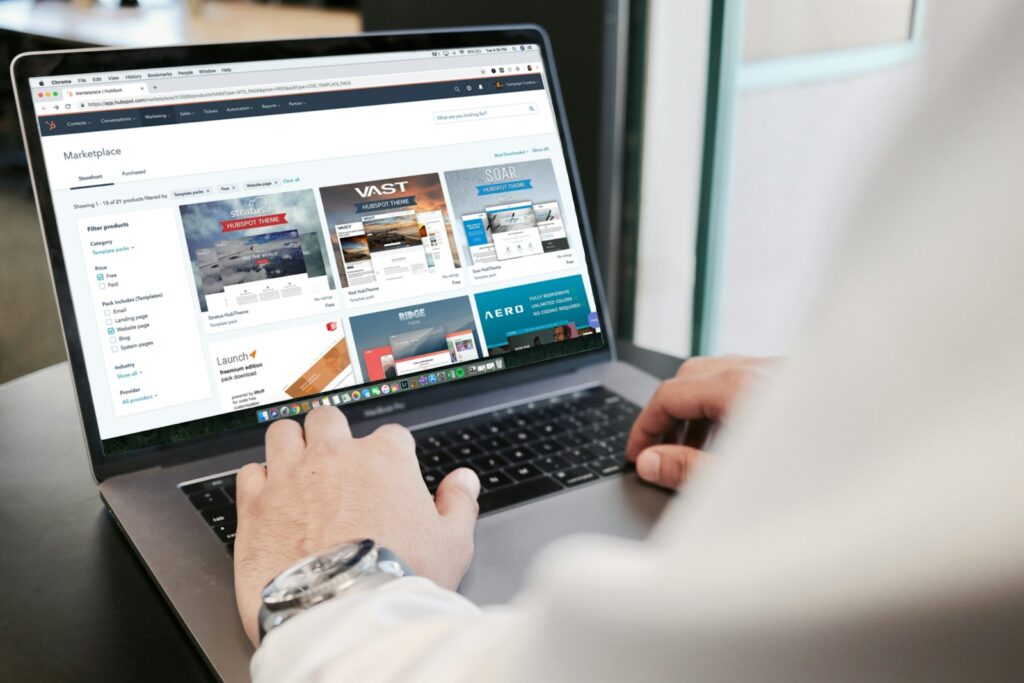
Choosing between a single-page and multi-page website design is a crucial decision that can impact your site’s SEO performance. Both designs have their pros and cons, and understanding how each affects SEO can help you make an informed choice. In this article, we’ll compare single-page vs. multi-page website designs for SEO to help you determine which is best for your needs.
Understanding Single-Page Website Design
A single-page website, as the name suggests, consists of only one web page. All the content is loaded on this single page, and users navigate through sections via scrolling or clicking on navigation links that jump to different parts of the page.
Pros of Single-Page Website Design:
- Simplicity and User Experience:
- Single-page websites offer a straightforward user experience. Visitors can find all the information they need by simply scrolling, making it easy to navigate.
- Mobile Friendliness:
- These websites are often more mobile-friendly because the scrolling navigation translates well to mobile devices. This can improve the user experience and positively impact SEO.
- Focused Content:
- With all the information on one page, single-page websites allow for a more focused message. This can be beneficial for conversion rates, especially for landing pages or specific campaigns.
Cons of Single-Page Website Design:
- Limited Keyword Targeting:
- With only one page, it’s challenging to target multiple keywords effectively. This can limit your ability to rank for a variety of search terms.
- SEO Challenges:
- Single-page websites might struggle with SEO because search engines typically favor more content and multiple pages. Having limited content can make it harder to rank well.
Understanding Multi-Page Website Design
A multi-page website contains multiple pages, each dedicated to different content areas or topics. Users navigate through the site using a menu or other navigation tools to move from one page to another.
Pros of Multi-Page Website Design:
- Better SEO Opportunities:
- Multi-page websites can target a wide range of keywords across different pages, increasing the chances of ranking well for various search terms.
- Organized Content:
- Content can be divided into specific sections and pages, making it easier for users to find information. This organization can enhance the user experience and boost SEO.
- More Content:
- More pages allow for more content, which can help improve your site’s authority and relevance in the eyes of search engines.
Cons of Multi-Page Website Design:
- Complex Navigation:
- With more pages, navigation can become complex. Poorly structured navigation can lead to a negative user experience, which can impact SEO.
- Slower Load Times:
- Multi-page sites can sometimes suffer from slower load times, especially if not optimized properly. This can affect user experience and SEO rankings.
Single-Page vs. Multi-Page Website Designs for SEO
Keyword Targeting:
- Single-Page: Limited keyword targeting due to having all content on one page. This can restrict your ability to rank for multiple keywords.
- Multi-Page: Allows for extensive keyword targeting across different pages. Each page can be optimized for specific keywords, improving overall SEO performance.
Content Depth:
- Single-Page: Content is concentrated on one page, which can be beneficial for focused topics but limits the depth and breadth of information.
- Multi-Page: Offers the ability to create in-depth content across multiple pages, providing a comprehensive resource for users and search engines.
User Experience:
- Single-Page: Provides a seamless and simple user experience, especially on mobile devices. However, it may not be ideal for sites that require extensive content.
- Multi-Page: Can offer a more organized and detailed user experience. Properly structured navigation is crucial to ensure users can easily find information.
Load Times:
- Single-Page: Generally faster initial load times, but the overall performance depends on the amount of content and media on the page.
- Multi-Page: Can experience slower load times if not optimized, but each page typically loads faster than a content-heavy single-page site.
Link Building and Authority:
- Single-Page: Limited opportunities for internal linking and building site authority. External links are also concentrated on one page.
- Multi-Page: Better opportunities for internal linking and building site authority. More pages mean more potential for external links to different parts of your site.
Conclusion
Choosing between a single-page and multi-page website design depends on your specific needs and goals. Single-page websites offer simplicity and a focused user experience but can struggle with SEO due to limited keyword targeting and content depth. Multi-page websites provide better opportunities for keyword targeting, content depth, and building site authority, but require careful navigation and optimization to ensure a positive user experience and fast load times.
For most businesses, a multi-page website is generally the better choice for SEO due to its flexibility and potential for comprehensive content. However, single-page websites can be effective for specific purposes, such as landing pages or campaigns, where a focused and streamlined approach is needed.
By understanding the strengths and weaknesses of each design, you can make an informed decision that aligns with your SEO strategy and business goals.
